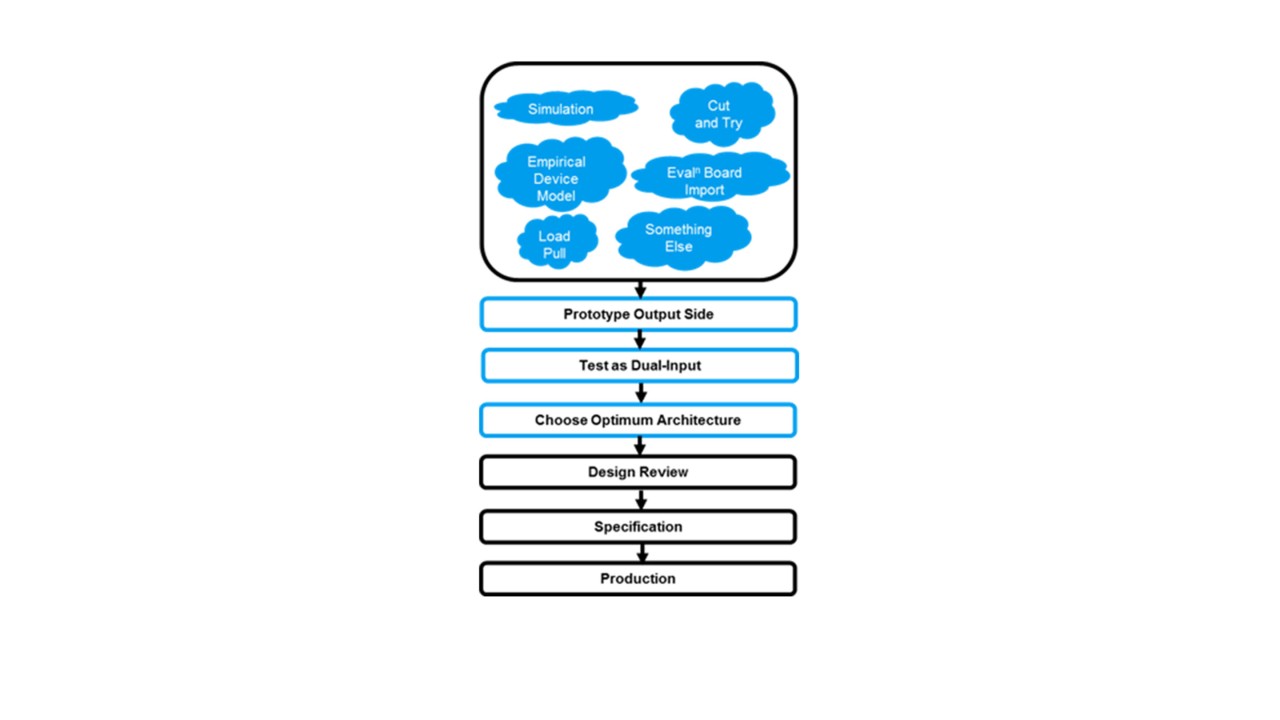Properly understanding any engineering concept, before embarkation on the design is imperative. Doherty is no different. Where possible, it is highly advisable to build simulation environments to correlate with the design, at least to understand trends and sensitivities. Design confidence and insight is, in the case of Doherty, now augmented by measurement.
The starting point for this measurement phase is a dual-input Doherty DUT – comprising two input ports, input and output matching networks, active devices, bias networks, and the Doherty combiner.Whether developing a high power discrete device based Doherty, or an integrated circuit (RFIC) version, the proposed design flow may still be beneficially applied. In both cases, a conventional, fixed RF input split architecture may be laid out.
To do so provides a reference, a benchmark, against which the dual-input derived variants may be compared.








